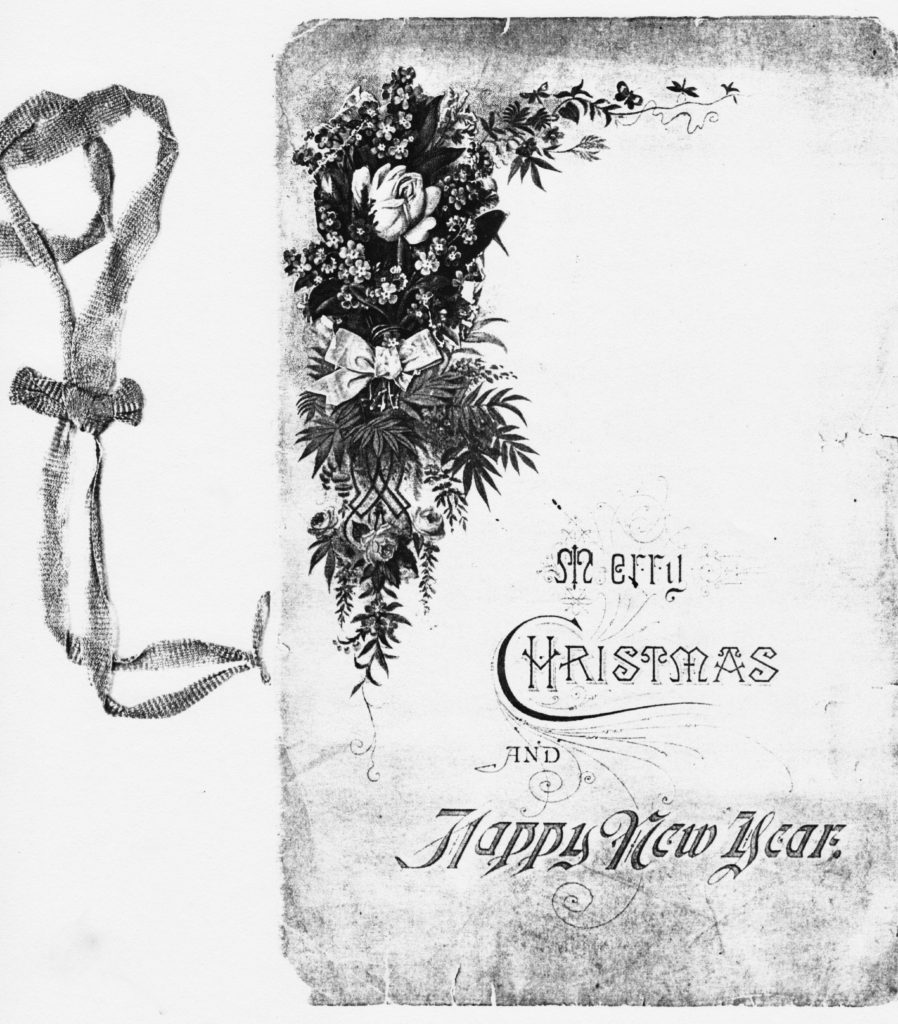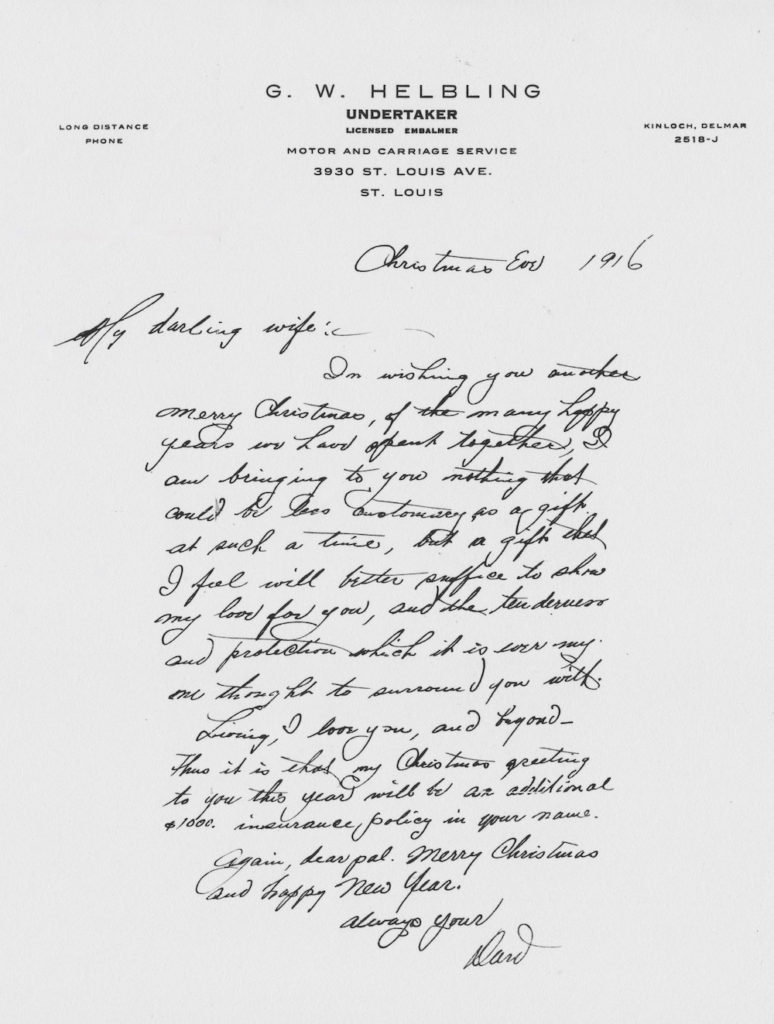A Christmas Eve Gift of Love: G.W. Helbling to Anna May Beerbower Helbing, 1916

Helbling Family, Beerbower Family (Click for Family Tree)
As many are ‘wrapping up’ their holiday shopping today, one of our ancestors helps to put gift-giving into a different light.
Gerard William “G.W.” Helbling (1882-1971) was a talented artist as well as a very loving husband. He married Anna “May” Beerbower (1881-1954) on November 24th, 1904.

G. W. had a sign painting business during his younger years and then again in later years of his life. He also made beautiful cards, paintings, and even scrapbooks for his grandchildren. Within all he painted for family, his love came through, most especially in those treasures for his dear wife.
It would be wonderful to have the color version of G.W.’s card so that we could better tell if it was a manufactured card (the flower section does look pre-printed) or if he had painted part of the image; we also do not know what was inside the card or on the back of it. We are, however, grateful to have this black and white copy of the card front, and the letter inside, from an early, miraculous contraption called a “Xerox machine.” (Introduced in 1959, these copiers were not widely available for individual use for another 5-10 years, and copies were expensive when one was finally located.)
What was the Helbling family tradition as far as Christmas Eve and Christmas Day, and gift giving? Devout Catholics, it is likely they attended a Christmas Eve church service and again another on Christmas morn. Did the two exchange their own gifts within the sweet adult quiet later on Christmas Eve, when the children were in bed, or wait until the morning when their children, 8 year-old Edgar Bradley Helbling (1908-1994), 5 year old Anna “May” Helbling, later Reilly (1911-1985), and 3 year old Viola Gertrude Helbling, later Carrigan (1913-1971), would excitedly unwrap a gift or two stashed under the decorated tree? Perhaps they waited until the children were engrossed in their new toys and then G.W. and May could share a moment together.

G. W., or “Dard” as May called him, would have handed this envelope sweetly to his beloved wife:

“Merry Christmas
to my dear pal”
May would have pulled the card out of the envelope, feasting on the beautiful card that was a gift in itself.
Inside the card was something even more precious- a sweet letter detailing G.W.’s gift for Anna:

Here is a transcription of the letter:
G. W. HELBLING
LONG DISTANCE UNDERTAKER KINLOCH, DELMAR
PHONE LICENSED EMBALMER 2518-J
MOTOR AND CARRIAGE SERVICE
3930 ST. LOUIS AVE.
ST. LOUIS
Christmas Eve 1916
My darling wife: ~
I’m wishing you another
Merry Christmas, of the many happy
years we have spent together, I
am bringing to you nothing that
could be less customary as a gift
at such a time, but a gift that
I feel will better suffice to show
my love for you, and the tenderness
and protection which it is ever my
one thought to surround you with.
Living, I love you, and beyond-
thus it is that my Christmas greeting
to you this year will be an additional
$1000. Insurance policy in your name.
Again, dear pal. Merry Christmas
and happy New Year.
always your
Dard
The family did not have much income for holiday presents and even daily expenses, but G.W. knew that the cost of a life insurance policy would help to provide peace of mind for the unthinkable- his death. Working as an undertaker at that time would have likely influenced him to choose his “less customary” gift. The policy was one of the best gifts he could give his wife, especially as their family grew. What a loving husband!
Notes, Sources, and References:
- Family treasure chest of photos and ephemera. It is unknown where this copy came from, or where the original is today. If someone reading this has the original, we would love it if you would share a color copy, and let us know more about the card itself. Thanks in advance!
- G. W. Helbling was sometimes listed instead as William Gerard Helbling, especially in his earlier years. His paternal side was German, and in many German families it was very common for a person to use their middle name on a daily basis, rather than their first given name.
- Thankfully May never had to use the insurance policy (unless they cashed it in) as G.W. survived to father three more children with her (their first child had died in infancy). Anna May passed away in 1954, and G.W. lived another 17 years.
Click to enlarge any image. Please contact us if you would like an image in higher resolution.
We would love to read your thoughts and comments about this post (see form below), and thank you for your time! All comments are moderated, however, due to the high intelligence and persistence of spammers/hackers who really should be putting their smarts to use for the public good instead of spamming our little blog.






